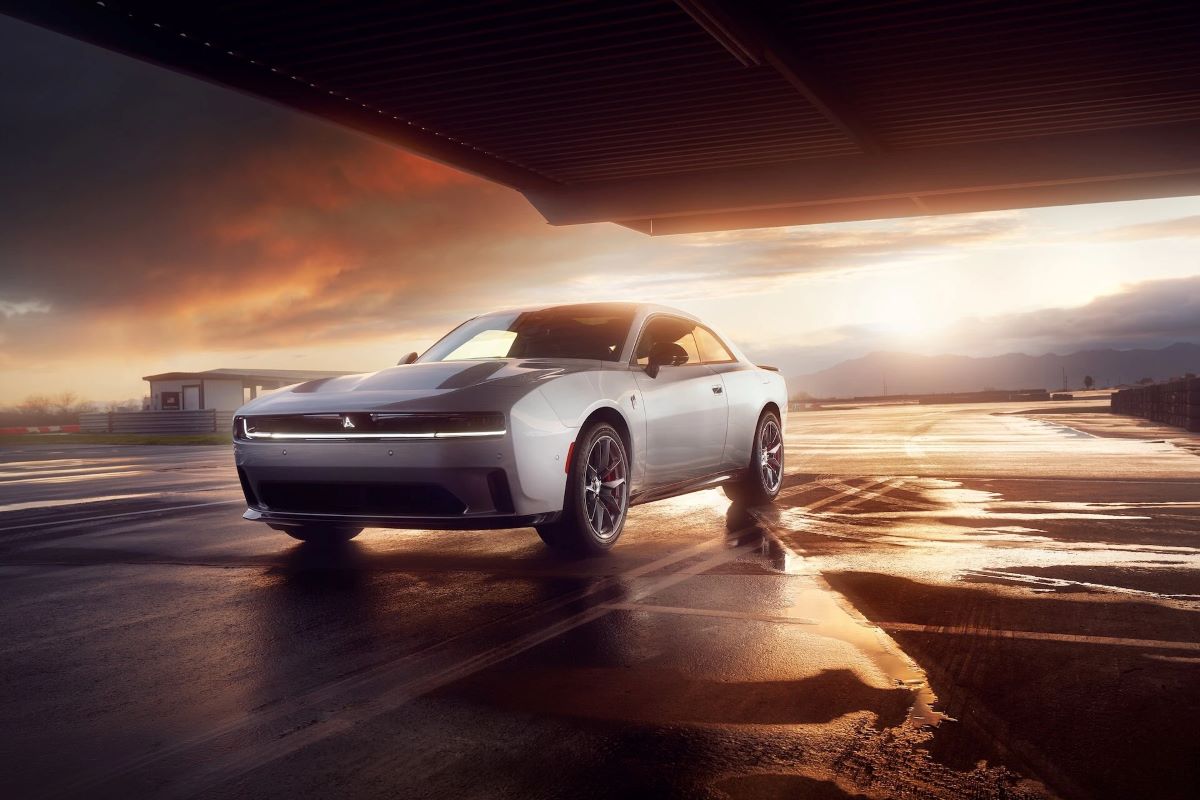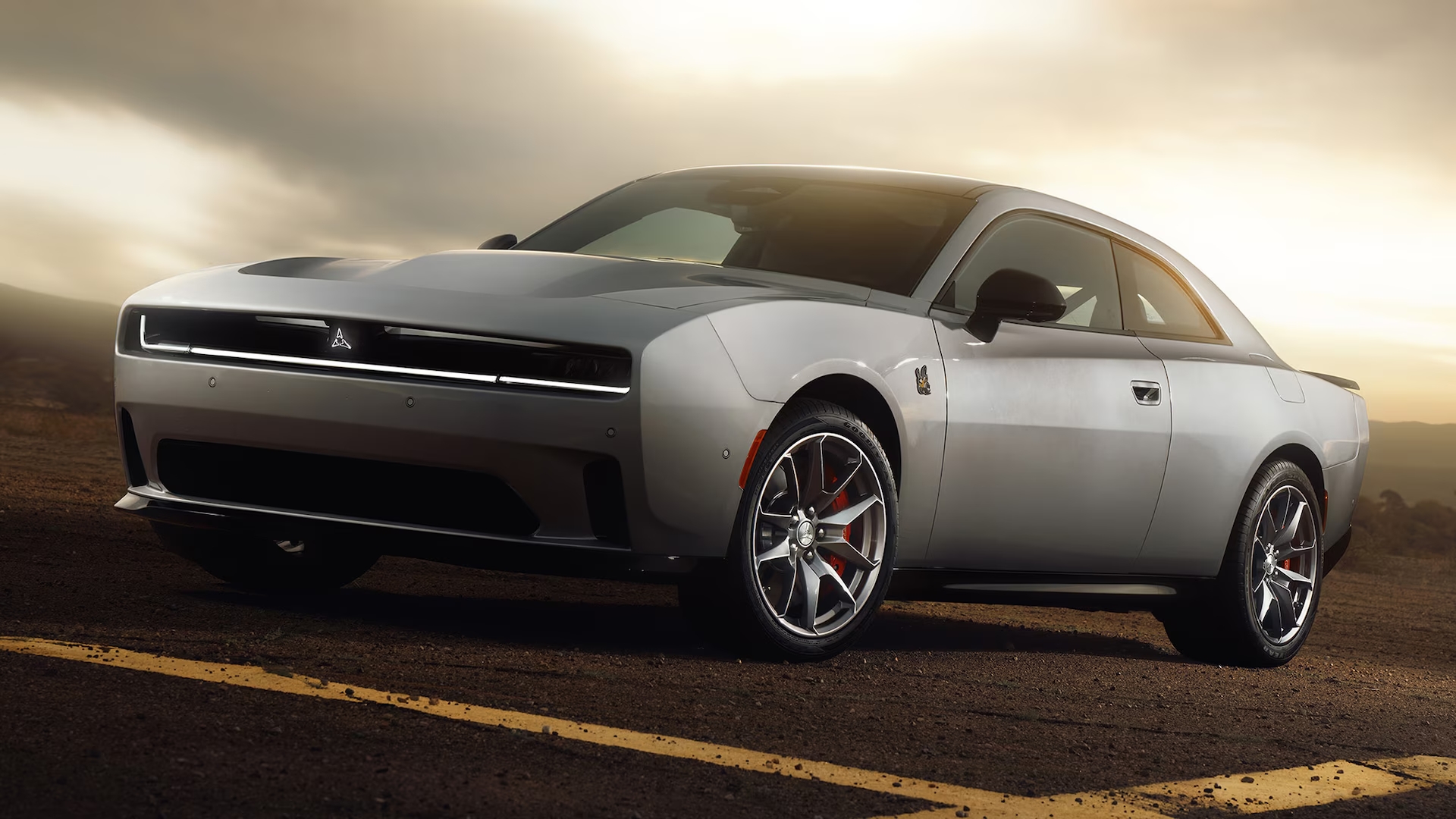Dodge surprised everyone. Around 18 months ago, the automaker unveiled a concept of an electric muscle car, the Dodge Charger Daytona SRT EV.
This modern iteration of Dodge’s iconic performance brand aimed to entice Hemi enthusiasts to embrace electric power.
The concept was an instant hit, boasting a sleek design with a distinctive nose cone, hatchback, lighting features, proportions, and a futuristic interior.
But many feared the production version would lose the striking elements that made the concept stand out, much like what happened with Ram’s Revolution electric pickup concept, which evolved into the more conventional 2025 Ram 1500 REV truck.
Fortunately, Dodge proved those fears unfounded. Dodge CEO Tim Kuniskis delivered an exciting announcement: the production version of the Charger concept revealed in August 2019 stayed remarkably true to the original design.
Aside from practical additions like door handles, side mirrors, and slightly revised front seats, the production car retains nearly everything that enthusiasts loved about the concept.
The first-ever two-door all-electric Chargers are set to hit the market this summer. Interestingly, the Charger name returns to its two-door roots, though it will also be available as a four-door variant.
A Diverse Charger Family
The new Dodge Charger lineup offers two- and four-door models, eight color options, and a choice between pure electric and twin-turbocharged Hurricane inline-six engines.
Several performance tiers are available, with the electric Chargers running on a 400-volt architecture, except for the high-performance SRT Banshee, which features an 800-volt system.
All models, whether gas or electric, come with all-wheel drive as standard.
They also sport Fratzog badges, a design element Kuniskis says Dodge kept for its cool aesthetic. EV models will display “Daytona” across the back instead of the Dodge logo.
Production of the 2024 Dodge Charger Daytona two-door EV begins mid-year at the Windsor Assembly Plant in Canada. The initial lineup includes two higher-performance trims:
1. Dodge Charger Daytona R/T: This trim delivers 456 horsepower, boosted by a Direct Connection Stage 1 upgrade kit to 506 hp.
An additional 40-hp Power Shot feature provides a 15-second burst of up to 496 hp, with a 30-second cooldown before reuse. Combined front and rear motor torque peaks at 404 lb-ft.
2. Dodge Charger Daytona Scat Pack: With an 80-hp Direct Connection Stage 2 kit, the Scat Pack offers 630 hp and up to 670 hp with Power Shot engaged.
It achieves 627 lb-ft of torque, a 0-60 mph time of 3.3 seconds, and a quarter-mile in 11.5 seconds. Additional features include drift and donut modes for controlled slip and rear-wheel-drive emulation.
Both trims feature a 100.5-kWh lithium-ion battery with nickel, cobalt, and aluminum chemistry, providing 317 miles of range for the R/T and 260 miles for the Scat Pack.
Charging from 20% to 80% takes about 27 minutes on a 350-kW Level 3 DC CCS fast charger, with peak charging speeds of 9.9 miles per minute for the R/T and 8.1 miles per minute for the Scat Pack.

Gas and Four-Door Chargers
In 2025, Dodge will expand the lineup with electric four-door Chargers and gas-powered models dubbed “Charger Sixpacks.”
These will use the same platform and body as the EVs but feature twin-turbo 3.0-liter Hurricane inline-six engines, available in 420-hp standard-output or 550-hp high-output variants.
Both come with eight-speed automatic transmissions. Dodge has ruled out adding a V8, plug-in hybrid, or range-extender options.
The ultimate addition will arrive in 2025 with the Dodge Charger Daytona SRT Banshee, offering three of the nine planned power levels.
It will feature drag mode, a two-speed transmission, and the 800-volt architecture, making it the fastest and most powerful Charger in the lineup.
Design and Features
The Chargers maintain the aggressive muscle car look, with widebody designs, R-Wing front ends, and aerodynamic enhancements. Designers avoided retro cues, focusing on fresh, modern proportions.
Large tires and upgraded brakes match the high performance, while interior features like a driver-centric cockpit, ambient lighting, and advanced infotainment systems emphasize modernity.
The interior closely resembles the concept, featuring a flat-top and bottom steering wheel, hand-wrapped surfaces, and advanced displays.
A 10.3-inch driver display, a 12.3-inch center screen, and an optional 16-inch cluster provide customizable information. Uconnect5 delivers a wealth of performance and EV-specific data.
Customization and Tuning
Customization remains a key part of the Dodge identity. Various packages, including Plus Group, Blacktop, Track, Carbon and Suede, and Sun and Sound, allow for personalization.
Despite concerns about EV tuning limitations, Dodge ensures that tuners can modify the new Chargers, with stage kits for unlocking extra power already in development.
A Risky but Necessary Evolution
The shift to EVs has been met with skepticism from Dodge’s loyal fanbase. Kuniskis acknowledges this, noting that the automaker designed the lineup to appease traditionalists while embracing innovation.
By focusing on performance over efficiency, Dodge aims to keep its identity intact. The fratzonic exhaust system, which mimics the sound of Hellcats, is a prime example of this philosophy.
Dodge has prepared for potential delays by stockpiling current Charger and Challenger models but remains confident in its timeline.
Pricing details are yet to be announced, but Kuniskis expects many buyers will opt for leases to take advantage of federal EV rebates.
Whether the new Charger lineup will win over die-hard fans remains to be seen, but its bold design and performance potential make it a formidable entry in the evolving muscle car market.

